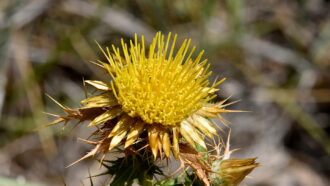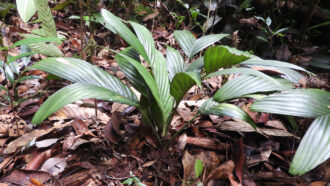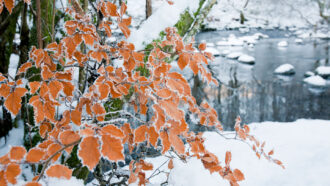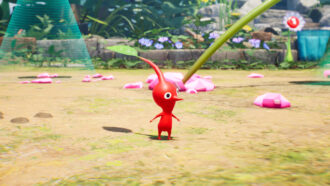Explainer: How photosynthesis works
Plants make sugar and oxygen with the power of water, carbon dioxide and sunlight
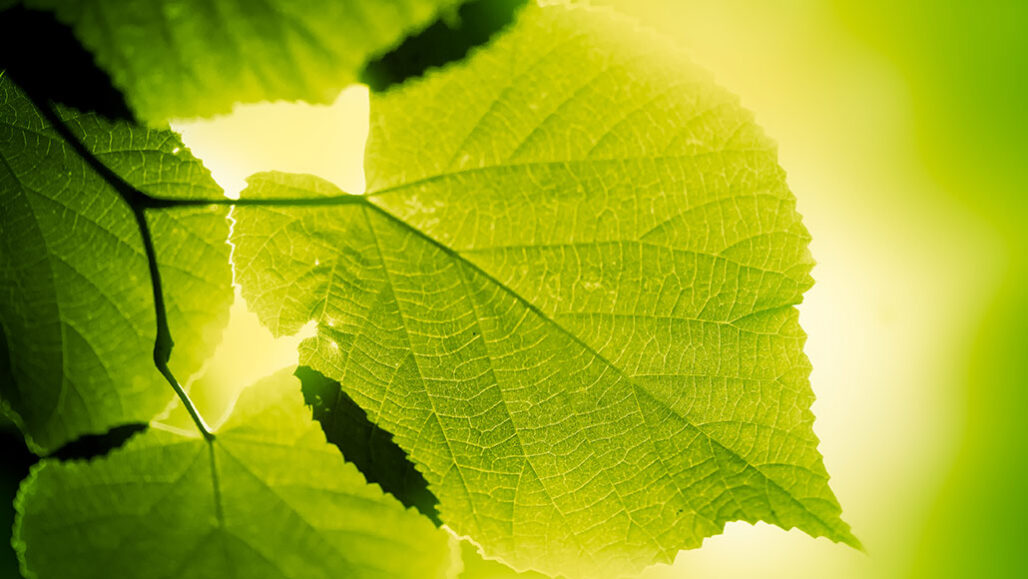
Green plants take in light from the sun and turn water and carbon dioxide into the oxygen we breathe and the sugars we eat.
Jeja/E+/Getty Images
Take a deep breath. Then thank a plant. If you eat fruit, vegetables, grains or potatoes, thank a plant too. Plants and algae provide us with the oxygen we need to survive, as well as the carbohydrates we use for energy. They do it all through photosynthesis.
Photosynthesis is the process of creating sugar and oxygen from carbon dioxide, water and sunlight. It happens through a long series of chemical reactions. But it can be summarized like this: Carbon dioxide, water and light go in. Glucose, water and oxygen come out. (Glucose is a simple sugar.)
Photosynthesis can be split into two processes. The “photo” part refers to reactions triggered by light. “Synthesis” — the making of the sugar — is a separate process called the Calvin cycle.
Both processes happen inside a chloroplast. This is a specialized structure, or organelle, in a plant cell. The structure contains stacks of membranes called thylakoid membranes. That’s where the light reaction begins.
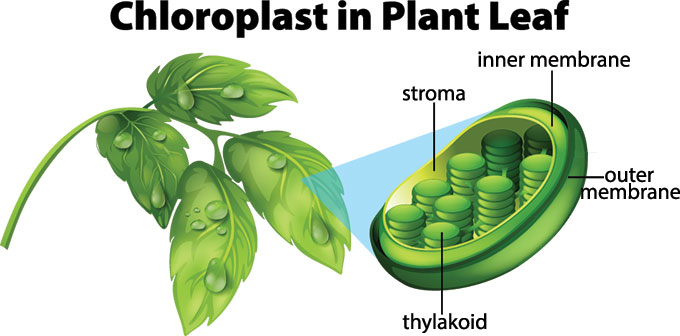
Let the light shine in
When light hits a plant’s leaves, it shines on chloroplasts and into their thylakoid membranes. Those membranes are filled with chlorophyll, a green pigment. This pigment absorbs light energy. Light travels as electromagnetic waves. The wavelength — distance between waves — determines energy level. Some of those wavelengths are visible to us as the colors we see. If a molecule, such as chlorophyll, has the right shape, it can absorb the energy from some wavelengths of light.
Chlorophyll can absorb light we see as blue and red. That’s why we see plants as green. Green is the wavelength plants reflect, not the color they absorb.
While light travels as a wave, it also can be a particle called a photon. Photons have no mass. They do, however, have a small amount of light energy.
When a photon of light from the sun bounces into a leaf, its energy excites a chlorophyll molecule. That photon starts a process that splits a molecule of water. The oxygen atom that splits off from the water instantly bonds with another, creating a molecule of oxygen, or O2. The chemical reaction also produces a molecule called ATP and another molecule called NADPH. Both of these allow a cell to store energy. The ATP and NADPH also will take part in the synthesis part of photosynthesis.
Notice that the light reaction makes no sugar. Instead, it supplies energy — stored in the ATP and NADPH — that gets plugged into the Calvin cycle. This is where sugar is made.
But the light reaction does produce something we use: oxygen. All the oxygen we breathe is the result of this step in photosynthesis, carried out by plants and algae (which are not plants) the world over.
Give me some sugar
The next step takes the energy from the light reaction and applies it to a process called the Calvin cycle. The cycle is named for Melvin Calvin, the man who discovered it.
The Calvin cycle is sometimes also called the dark reaction because none of its steps require light. But it still happens during the day. That’s because it needs the energy produced by the light reaction that comes before it.
While the light reaction takes place in the thylakoid membranes, the ATP and NADPH it produces end up in the stroma. This is the space inside the chloroplast but outside the thylakoid membranes.
The Calvin cycle has four major steps:
- carbon fixation: Here, the plant brings in CO2 and attaches it to another carbon molecule, using rubisco. This is an enzyme, or chemical that makes reactions move faster. This step is so important that rubisco is the most common protein in a chloroplast — and on Earth. Rubisco attaches the carbon in CO2 to a five-carbon molecule called ribulose 1,5-bisphosphate (or RuBP). This creates a six-carbon molecule, which immediately splits into two chemicals, each with three carbons.
- reduction: The ATP and NADPH from the light reaction pop in and transform the two three-carbon molecules into two small sugar molecules. The sugar molecules are called G3P. That’s short for glyceraldehyde 3-phosphate (GLIH- sur-AAL-duh-hide 3-FOS-fayt).
- carbohydrate formation: Some of that G3P leaves the cycle to be converted into bigger sugars such as glucose (C6H12O6).
- regeneration: With more ATP from the continuing light reaction, leftover G3P picks up two more carbons to become RuBP. This RuBP pairs up with rubisco again. They are now ready to start the Calvin cycle again when the next molecule of CO2 arrives.
At the end of photosynthesis, a plant ends up with glucose (C6H12O6), oxygen (O2) and water (H2O). The glucose molecule goes on to bigger things. It can become part of a long-chain molecule, such as cellulose; that’s the chemical that makes up cell walls. Plants also can store the energy packed in a glucose molecule within larger starch molecules. They can even put the glucose into other sugars — such as fructose — to make a plant’s fruit sweet.
All of these molecules are carbohydrates — chemicals containing carbon, oxygen and hydrogen. (CarbOHydrate makes it easy to remember.) The plant uses the bonds in these chemicals to store energy. But we use the these chemicals too. Carbohydrates are an important part of the foods we eat, particularly grains, potatoes, fruits and vegetables.

